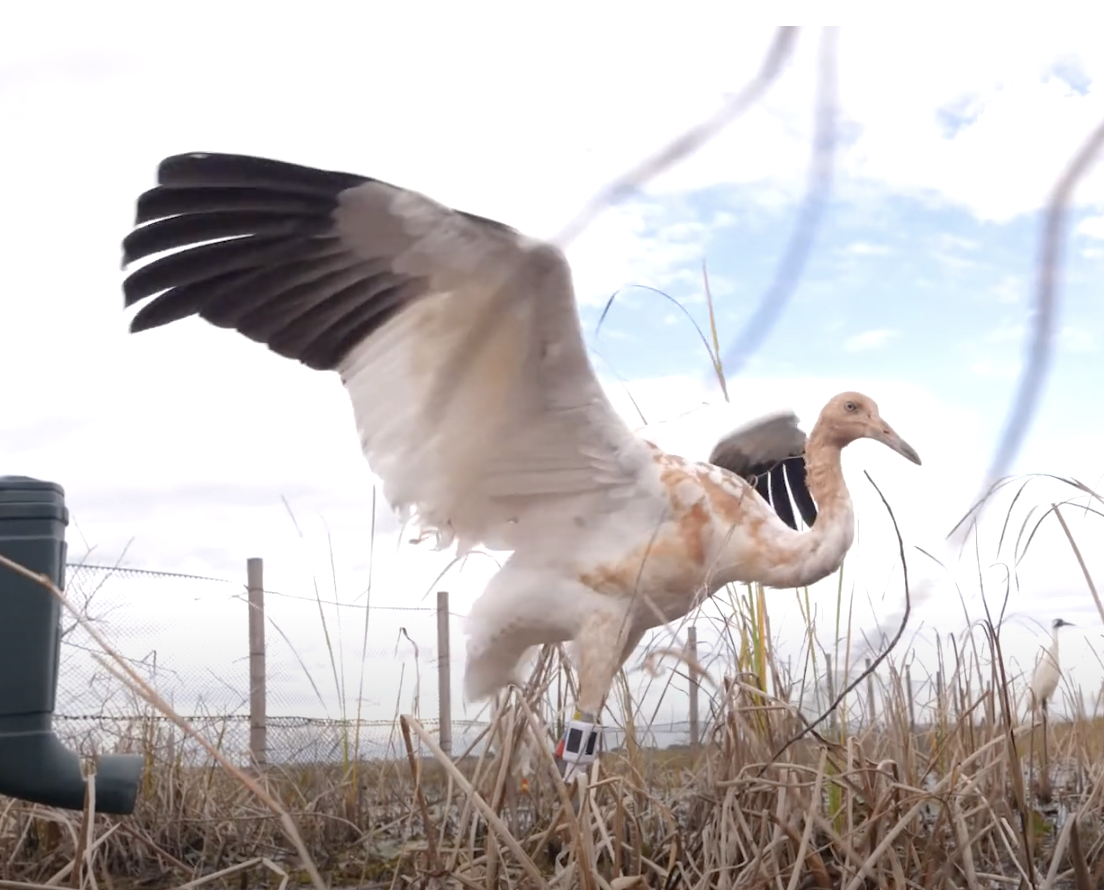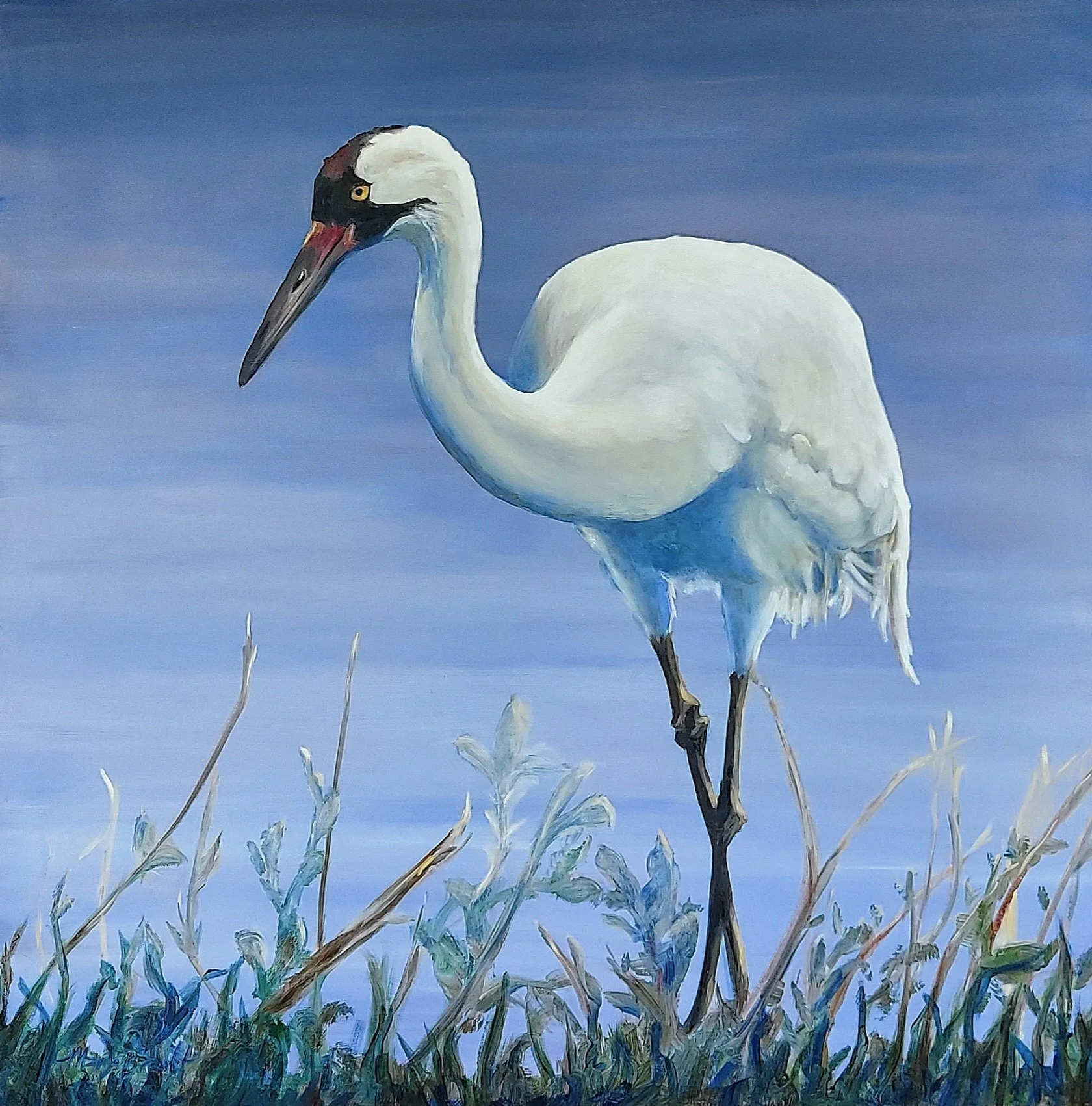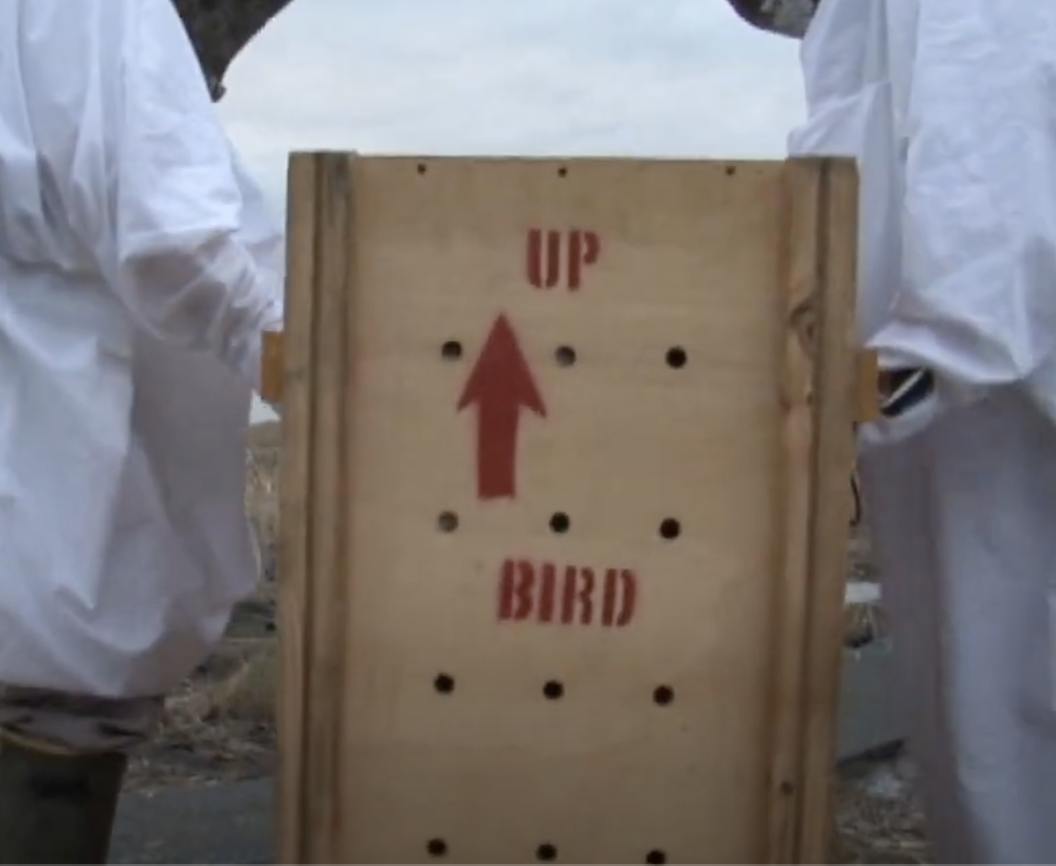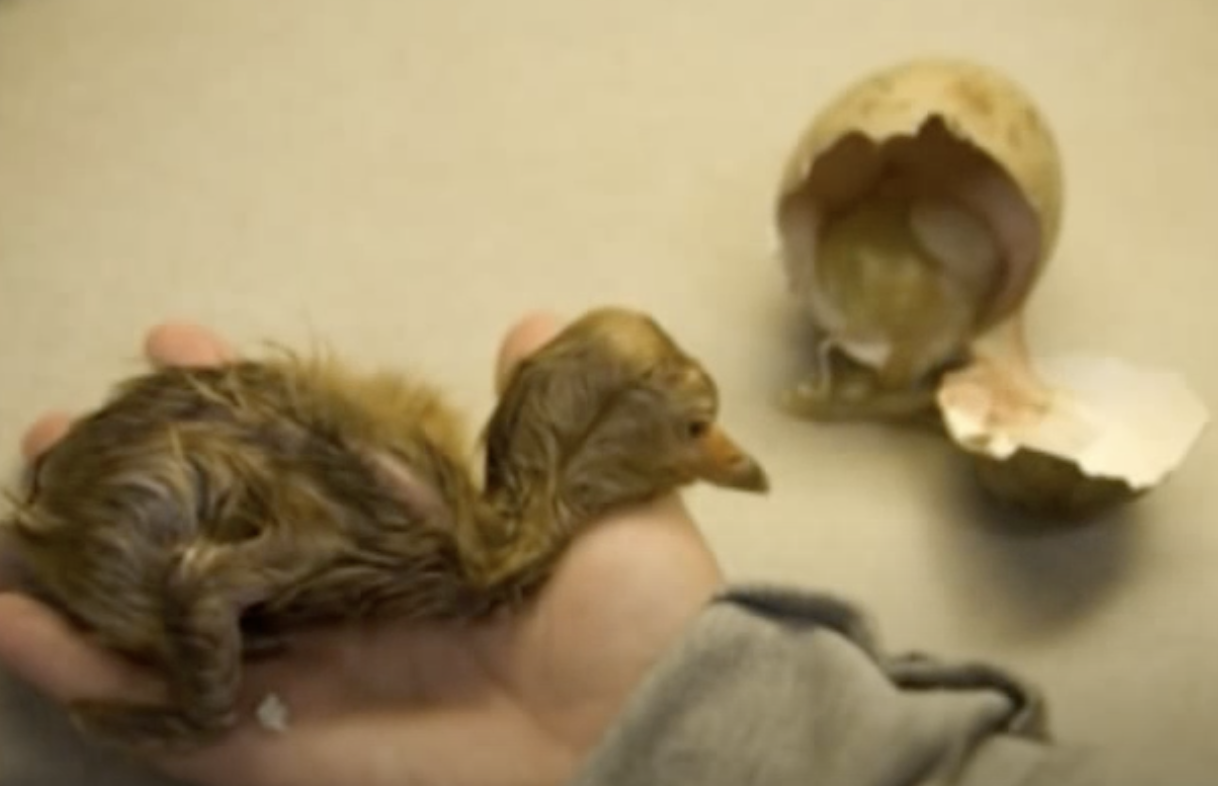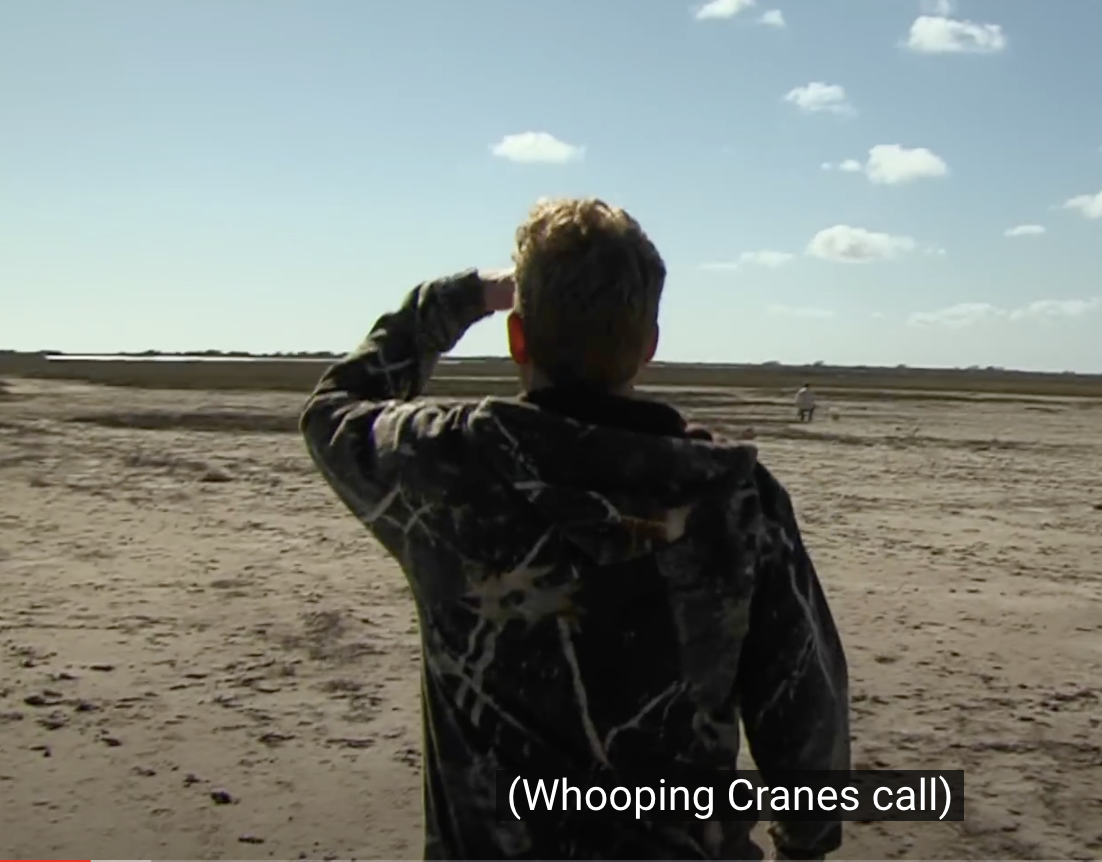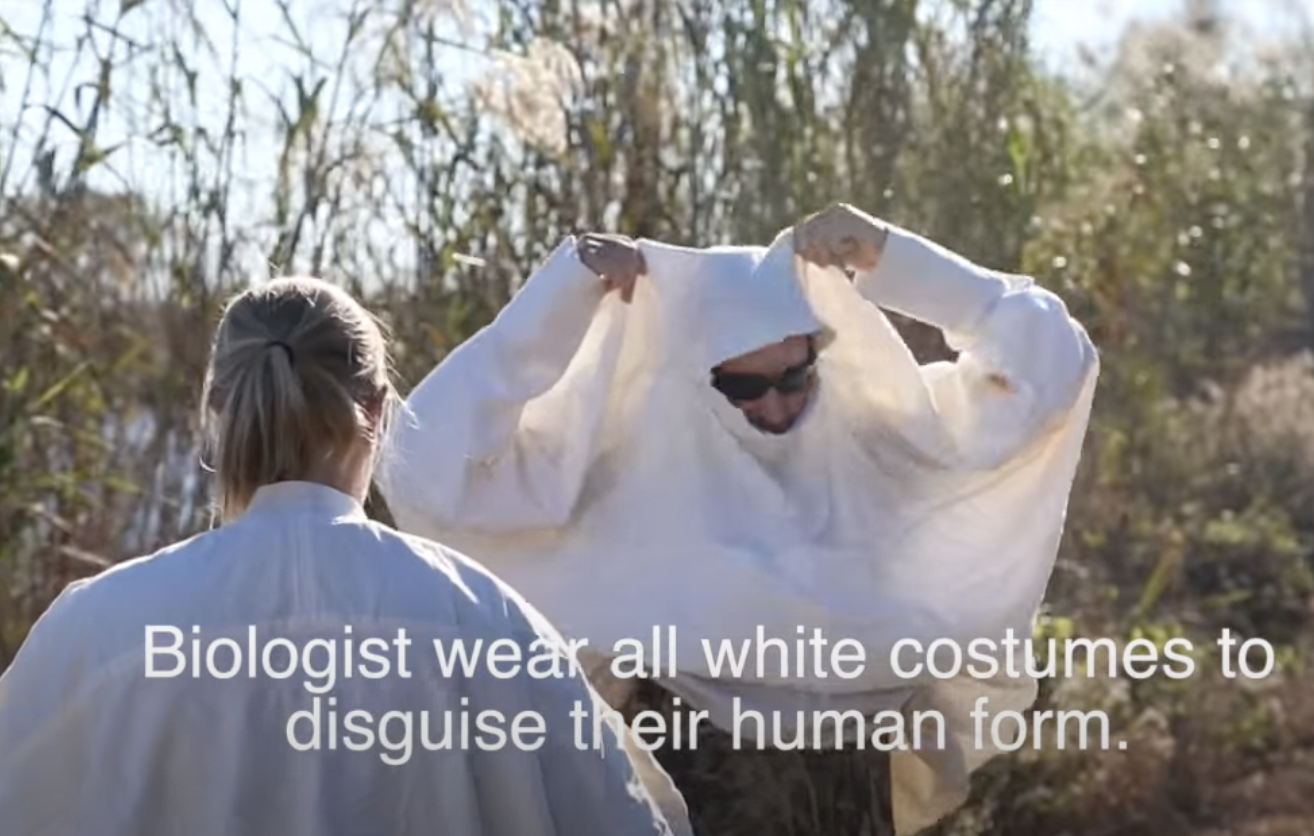CRANES
Cranes are among the most endangered families of birds in the world,
Whooping Cranes
In the early 1940s, only 21 Whooping Cranes remained in the world, hunted to near extinction, partly to supply plumes to the European fashion market. The last remaining flock was found migrating from northern Alberta, Canada, to Texas. Conservationists harvested eggs from this tiny flock and used the eggs to start the captive flock, which has since gone on to supply the birds for all the various release/reintroduction programs; such as the flock that now migrates between Wisconsin and Florida, and the current non-migrating flock started in Louisiana in 2011.
Thanks to these diligent efforts, in North America there are now about 840 birds, 80 of which are in Louisiana.

Juvenile Whooping Crane on a Lavender Day.
Oil on canvas 18 x 24 in (Original sold)
Each year the Louisiana Dept. of Wildlife and Fisheries releases a new cohort of juvenile cranes into the wild. Watch this fascinating story about the rearing / releasing of these birds.
https://www.youtube.com/watch?v=7OJjvvD4YSw
This painting was inspired by the image at minute 2:13

Texas Whooping Crane
Oil on Canvas 36 x 36in. (Original sold)
Thanks to careful management and protection of the original Whooping Crane flock which still migrates between Canada and Texas, there are now about 536 birds. This is still a vulnerable number but they are receiving attention and care and their progress is hopeful.
Watch this good news story here.
https://www.youtube.com/watch?v=-j5CqxUNpS8
See minute 1:03 for image that inspired this painting.
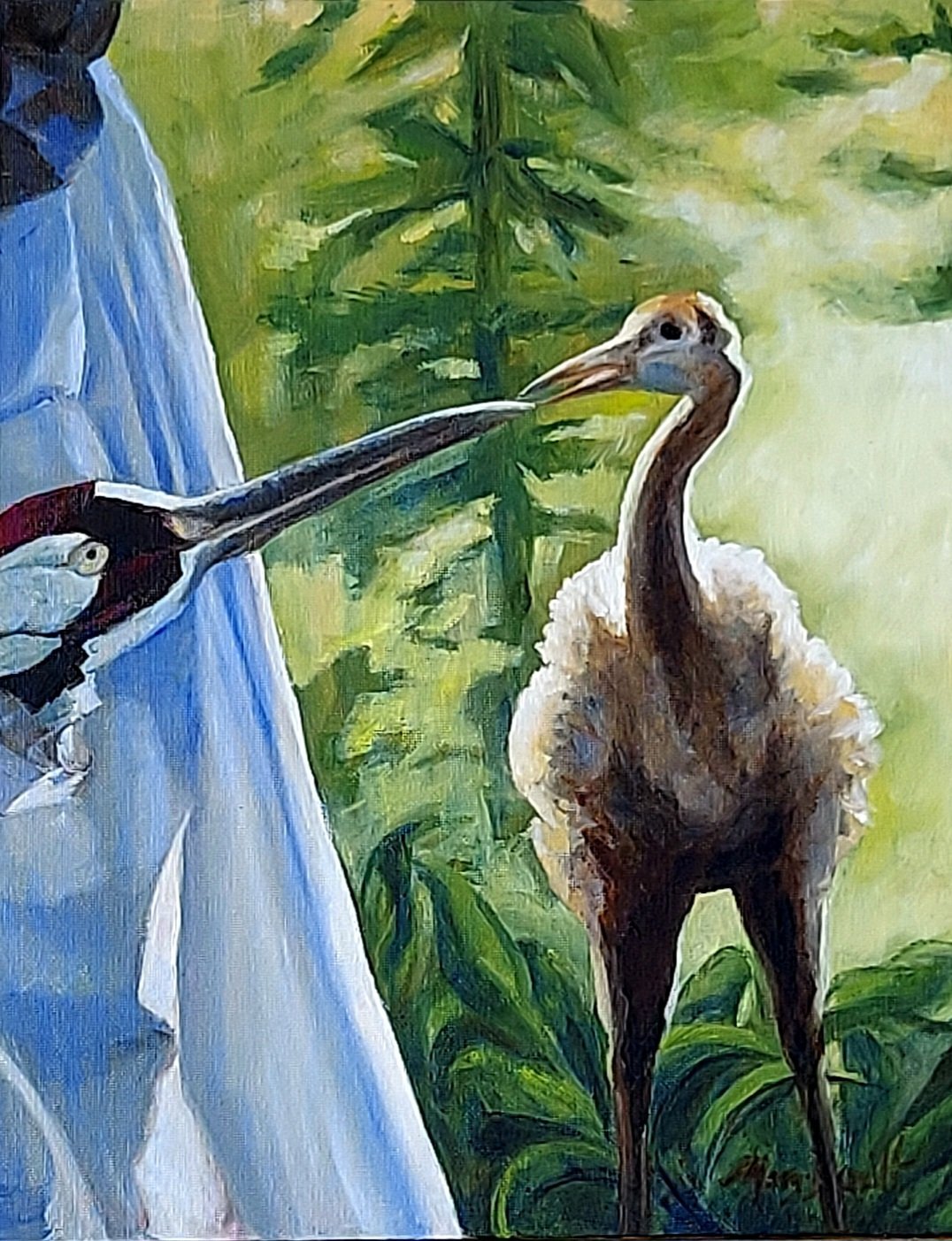
Chick with Handler and Puppet
Oil on canvas 11 x 14 in (Original sold)
As Whooping Crane chicks hatch in captivity, they must be taught what to eat and how to behave. A handler dressed in a white suit to hide the human form, uses a puppet to help the chick learn how to be a crane.

On the Way to Freedom
Oil on canvas 16 x 20
Since 2011, the Whooping Crane Reintroduction Project has increased the number of wild Cranes in Louisiana from 0 to about 86 individuals. In this painting, a juvenile, which still has its cinnamon-colored plumage, is being carried to a temporary holding pen until it is released into the wilds of Southwest Louisiana.
Watch the amazing story here:
https://www.youtube.com/watch?v=J8mn_m5IeDE&list=PLYu5YykXX0ppg9mwWE7Lj7uz88QeMaxq8&index=10
See minute 1:32 for the image that inspired this painting.
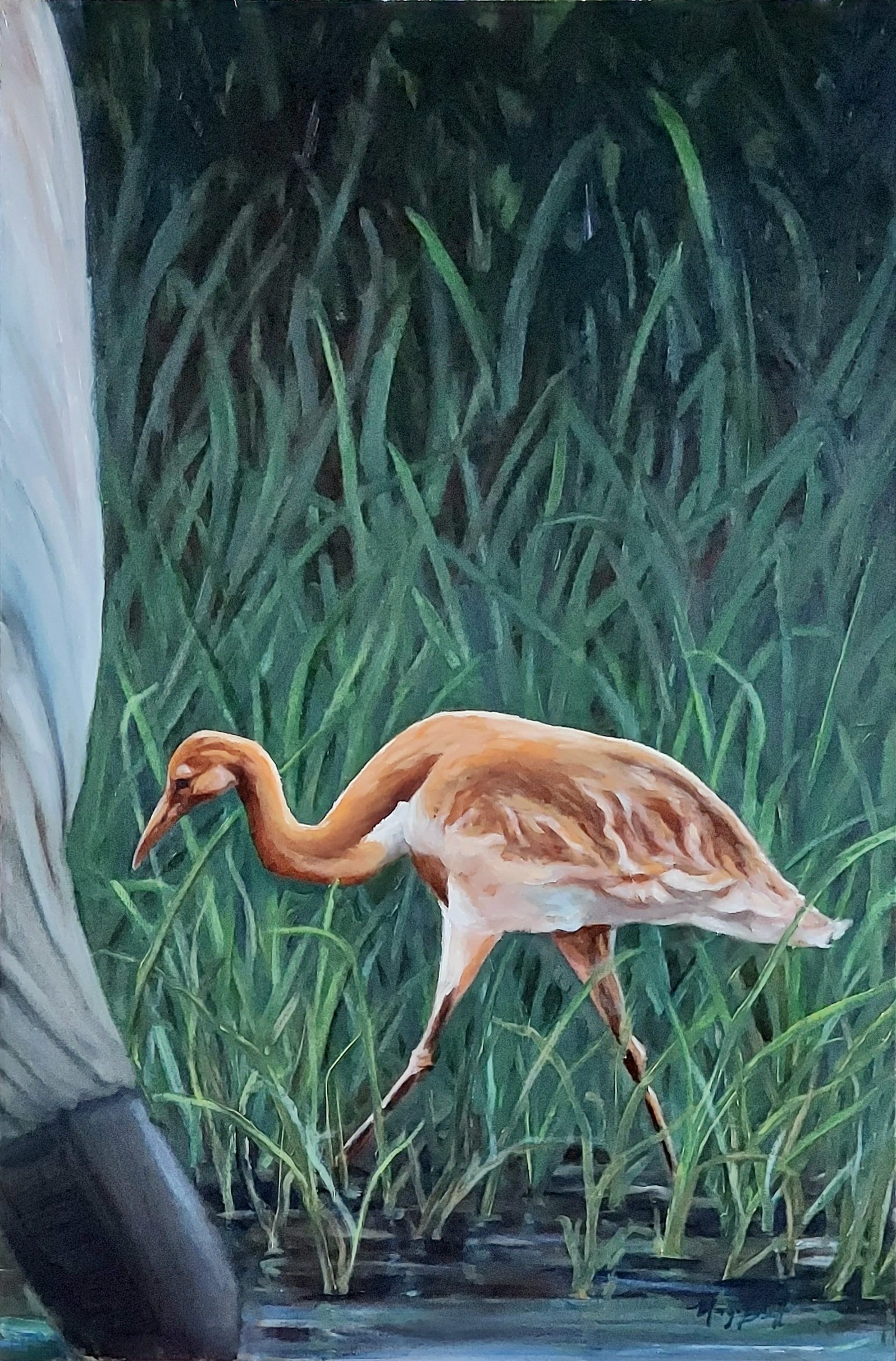
Whooping Crane Juvenile following Handler
Oil on canvas 24 x 36 in Contact me to purchase original.
Whooping Crane chicks raised in captivity are reared by a handler wearing a white costume to hide the human form.
There are now roughly 840 whooping cranes in North America, 80 of which are in Louisiana.
To learn more about the ambitious work to save these birds from extinction, watch this video:
https://www.youtube.com/watch?v=oCxB2Z4OeeI
See minute 5:03 for the image that inspired this painting.
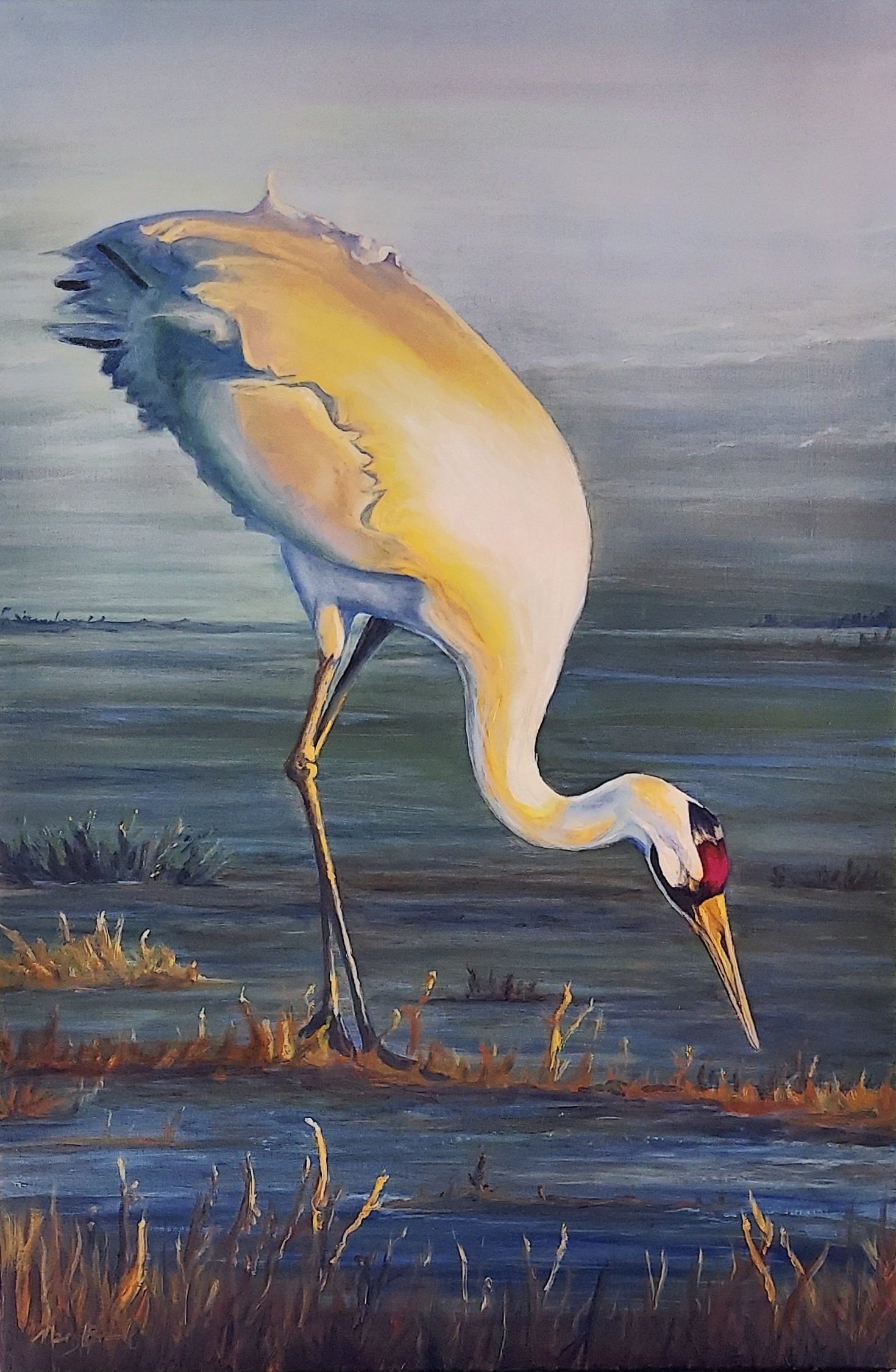
Whooping Crane’s Evening Meal.
Oil on canvas 24 x 36 in (Original sold)
See a story about the people who manage the Texas Whooping Cranes:
https://www.youtube.com/watch?v=oPjPmdVf36k
See image at minute 2:25 for the image that inspired this painting.
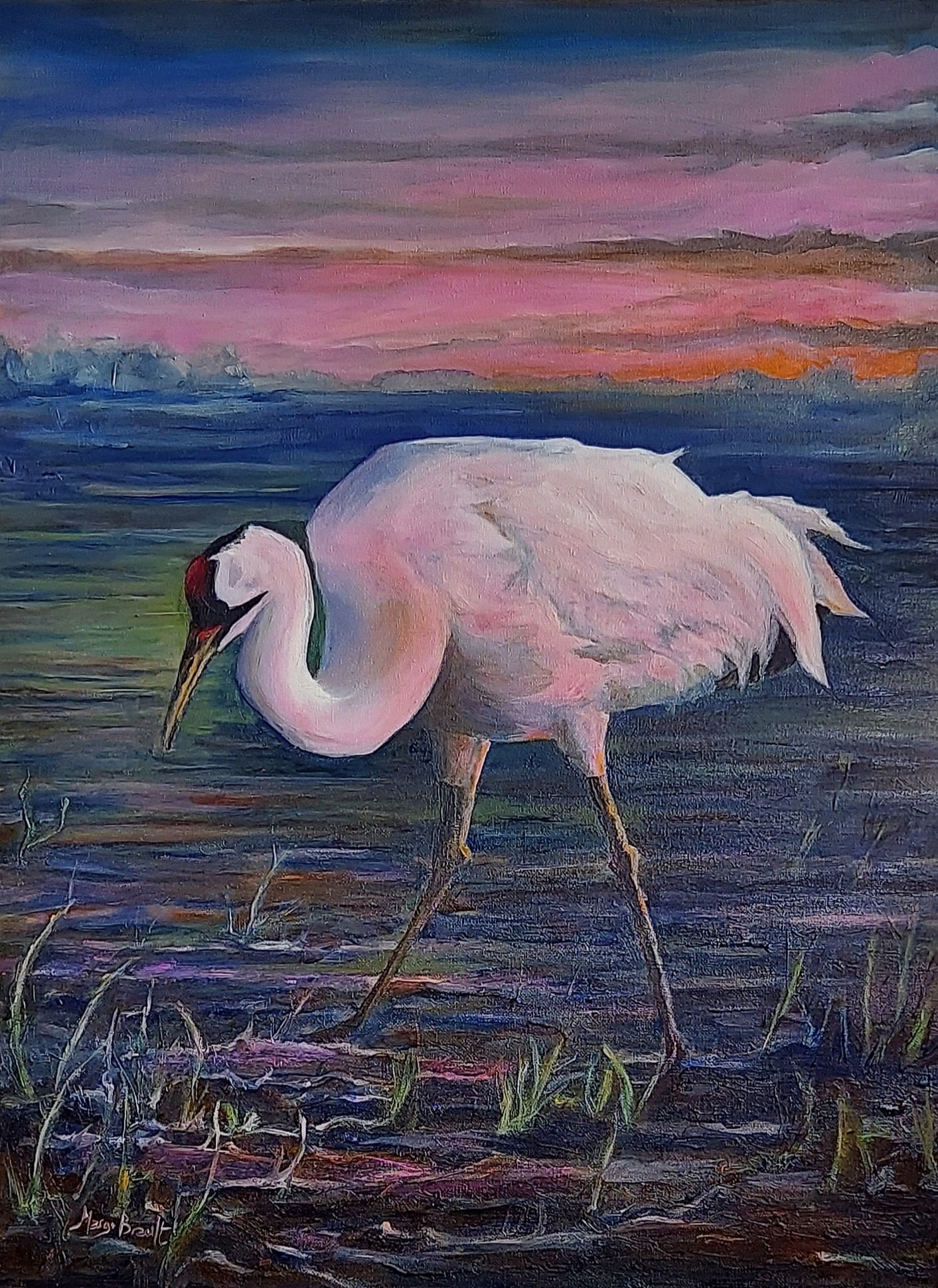
Whooping Crane in Evening Glow
Oil on Canvas. 18 x 24 in (Original sold)
Since 2011, the Louisiana Whooping Crane Reintroduction Project has brought the number of wild cranes in Louisiana up from 0 to about 80 indviduals. Luckily, many cranes have mated and their offspring have also contributing to this number.

Klaus the Crane
Oil on canvas 36 x 36 in (Original sold)
This painting was based on a photograph on p. 70 in Klaus Nigge’s book
The Whooping Cranes of North America.
I contacted Klaus for permission to paint his photo for use in an art show / fund-raiser for the Whooping Crane Reintroduction Project. When this painting sold, 40% of the price went to help buy tracking and GPS equipment for the project in Louisiana.

Oil on Canvas 16 x 20 in (Original Sold)
This juvenile Whooping crane is being checked by costume-clad vets before it is banded and released into the Louisiana landscape that had lost its last crane in 1950.
Now, thanks to the Whooping Crane Reintroduction Project, started in 2011, this crane will add to the growing wild population which, as of 2024, numbers about 80 birds.
Watch this video to see how vets check the cranes before their release: https://www.youtube.com/watch?v=wpW3muKiYh8
Prerelease Vet Check
Go to minute 2:36 to see the image which inspired this painting

Whooping Crane Family
Oil on canvas 22 x 30 in. Contact me to purchase original.
Whooping Cranes take about 4 years to reach sexual maturity and many don't survive the dangers of power lines, predators and poachers. But when they do mature, they mate for life.
Today, there are several pairs in Louisiana that are now hatching and rearing their own chicks.

